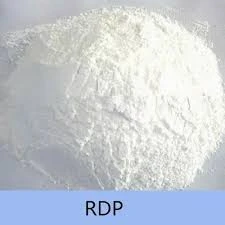
Sep . 28, 2024 17:00 Back to list
Applications and Benefits of Hydroxypropyl Methylcellulose in Various Industries
The Versatile Uses of Hydroxypropyl Methylcellulose
Hydroxypropyl Methylcellulose (HPMC) is a semi-synthetic polymer that has gained significant traction across various industries due to its unique properties. It is primarily derived from cellulose, which is a natural polymer obtained from plant cell walls. The modification of cellulose through hydroxypropyl and methyl substitution grants HPMC its distinct characteristics, making it suitable for an array of applications. This article delves into the multifaceted uses of HPMC, highlighting its roles in food, pharmaceuticals, construction, and cosmetics.
HPMC in the Food Industry
One of the most prevalent uses of HPMC is in the food industry, where it serves as a food additive. As a thickening agent, HPMC enhances the texture and viscosity of various products, including sauces, dressings, and ice creams. Its ability to improve the mouthfeel of low-fat products makes it a valuable ingredient for those seeking healthier food options without sacrificing taste. Furthermore, HPMC acts as an emulsifier, helping to blend ingredients that typically do not mix well, thus ensuring the stability of products over time.
In addition to these roles, HPMC is also used as a glazing agent for fruits and vegetables, providing a protective layer that prolongs shelf life while enhancing visual appeal. Being non-toxic and generally regarded as safe, it has earned approval from food safety authorities globally, solidifying its place in the food technology field.
HPMC in Pharmaceuticals
The pharmaceutical sector significantly benefits from the properties of HPMC. It is widely utilized as an excipient in drug formulations, particularly in controlled-release medications. HPMC’s hydrophilic nature allows it to absorb water and form a gel-like structure, regulating the release of active ingredients in the body over an extended period. This controlled release is crucial in minimizing side effects and improving therapeutic outcomes.
Moreover, HPMC serves as a binder in tablet formulation, ensuring that the ingredients remain compact and effective during production and storage. Its use in capsule manufacturing is also noteworthy; HPMC-based capsules are preferred for vegetarian options, offering a plant-based alternative to traditional gelatin capsules. Thus, HPMC plays a pivotal role in advancing pharmaceutical formulations while aligning with dietary preferences.
hydroxypropyl methylcellulose uses

HPMC in Construction
The construction industry is another significant domain where HPMC is utilized, primarily as an additive in cement and mortar mixes. Its incorporation enhances the workability and adhesion of mixtures, making them easier to apply and more durable once set. HPMC improves water retention in dry mixes, which is vital in preventing rapid evaporation during application, ensuring optimal curing and strength development.
Additionally, HPMC reduces the risk of cracking and shrinkage in concrete products, increasing their longevity and performance. Its capacity to improve the flow and leveling properties of self-leveling compounds and plasters has made it a favorite among construction professionals, contributing to more efficient and reliable building practices.
HPMC in Cosmetics
In the realm of cosmetics and personal care products, HPMC finds its application as a thickening and emulsifying agent. It enhances the texture and stability of creams, lotions, and gels, ensuring a pleasant user experience. Additionally, HPMC acts as a film-former, providing a protective barrier on the skin that can lock in moisture, which is particularly beneficial in skincare products.
Its versatility extends to hair care products, where it is used to improve the viscosity and application of shampoos and conditioners. By incorporating HPMC, manufacturers can achieve a smooth and luxurious formulation, appealing to consumer preferences.
Conclusion
Hydroxypropyl Methylcellulose is a remarkable compound widely utilized across various fields, from food and pharmaceuticals to construction and cosmetics. Its unique properties, including thickening, emulsifying, and binding capabilities, make it indispensable in developing innovative products. As industries continue to seek sustainable and effective solutions, HPMC's versatility assures its growing prominence in the global market. Whether enhancing the texture of food, ensuring the efficacy of pharmaceuticals, improving construction materials, or enriching cosmetic formulations, HPMC stands out as a true champion of modern applications.
-
Versatile Hpmc Uses in Different Industries
NewsJun.19,2025
-
Redispersible Powder's Role in Enhancing Durability of Construction Products
NewsJun.19,2025
-
Hydroxyethyl Cellulose Applications Driving Green Industrial Processes
NewsJun.19,2025
-
Exploring Different Redispersible Polymer Powder
NewsJun.19,2025
-
Choosing the Right Mortar Bonding Agent
NewsJun.19,2025
-
Applications and Significance of China Hpmc in Modern Industries
NewsJun.19,2025







